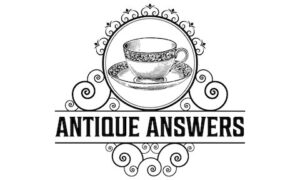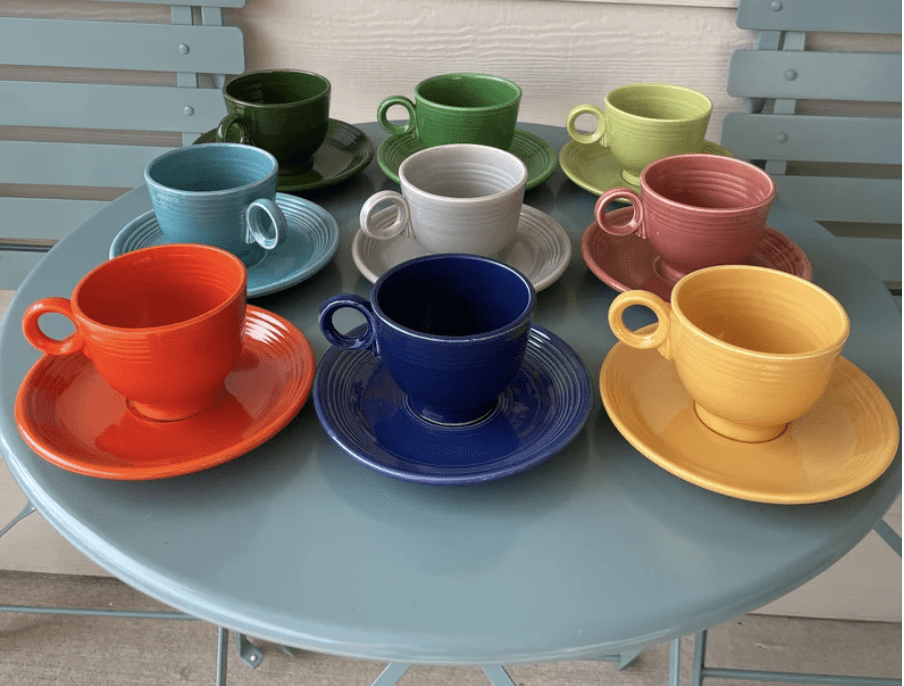
Fiestaware is a dishware company owned by the Homer Laughlin China Company, based in West Virginia. Launched in 1936, the dishes hit the stores soon after the Great Depression ended, forcing the company to advertise something both cheerful and cheap. Almost 90 years later, these dishes are still one of the best-selling brands in the United States and are known for their durability and their bright colors.
Fiestaware’s original five colors included red, yellow, cobalt blue, green, and ivory. Turquoise was added in 1937, and these six colors were the only ones produced until 1950. Fiestaware has generally followed national color trends, leading them to produce over 50 different colors over the years.
Although several original FIESTA colors have been discontinued, some dishes can still be found and sold for as much as $1600 for a cake plate. In the remainder of the article, the fascination with these simple dishes will be looked at, the brilliant colors will be discussed, and the story of how these dishes grew into a billion-dollar industry will be explained.
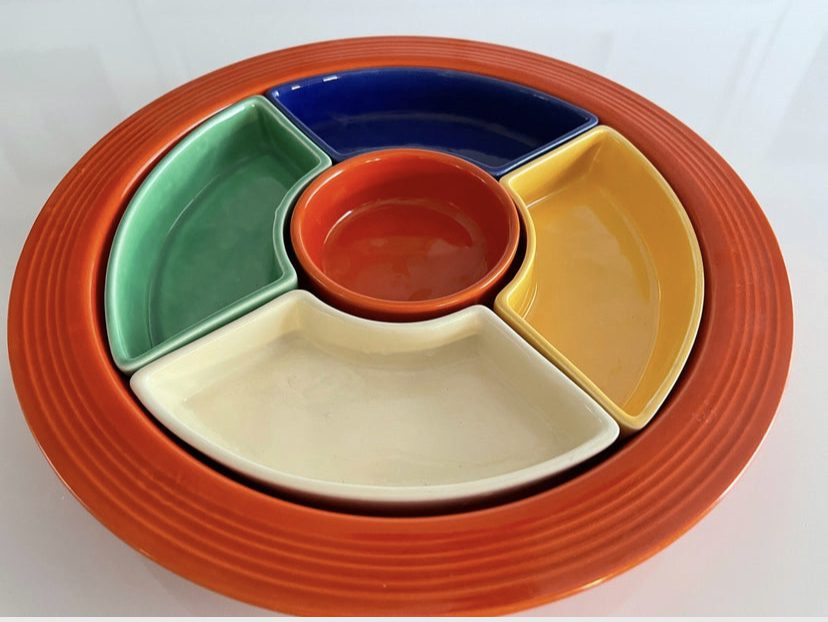
Colors over the Years
Since the company was started in 1936, there have been 54 FIESTA colors released and retired. Starting in 1986, the company has released one new color every year and switched out the colors so that they are constantly releasing and retiring colors. With the fashion color scheme changing from brighter colors to pastels in the 1950s, it made sense for the company to release four new Fiestaware colors and retire three old ones. Rose, grey, chartreuse, and forest green were introduced and yellow, ivory, and cobalt blue were retired. In 1959, all four of these new colors were discontinued and medium green was added.
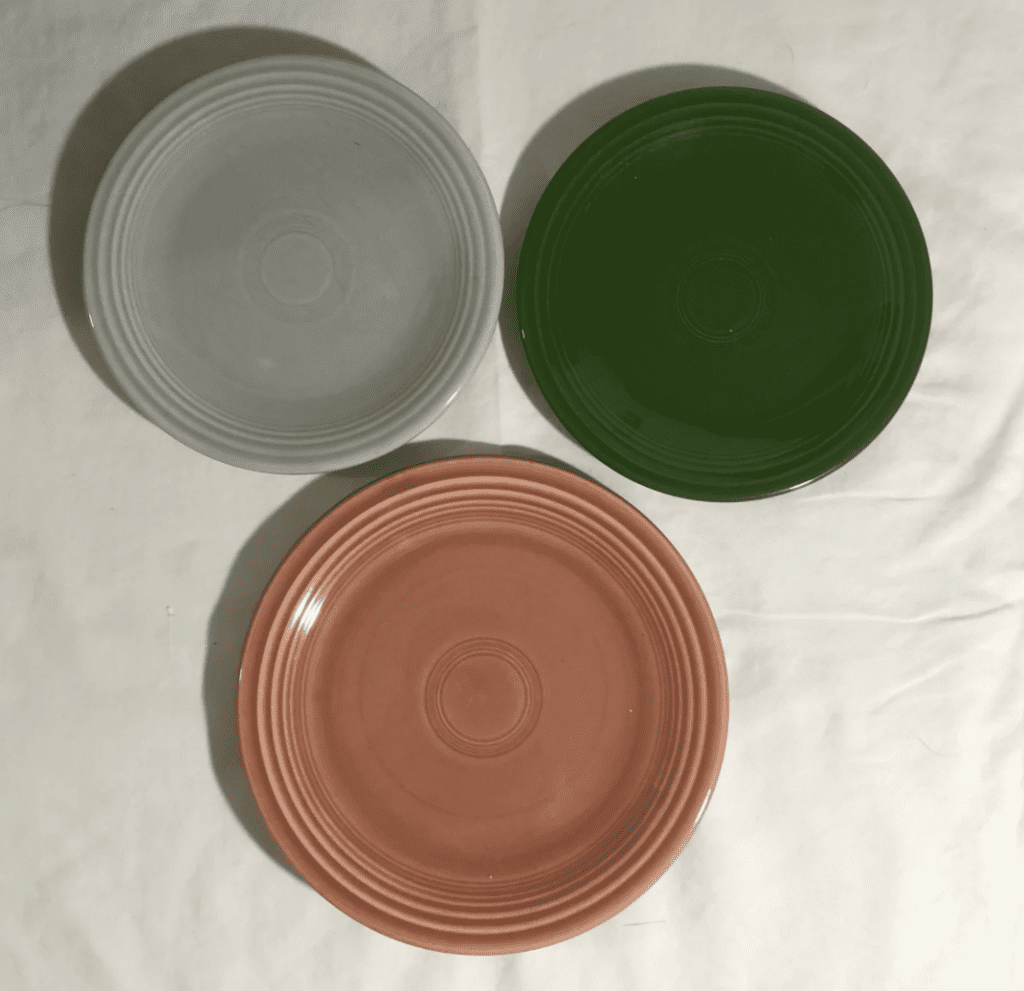
In 1969, the new FIESTA colors that were released included antique gold and turf green, with no colors retired.
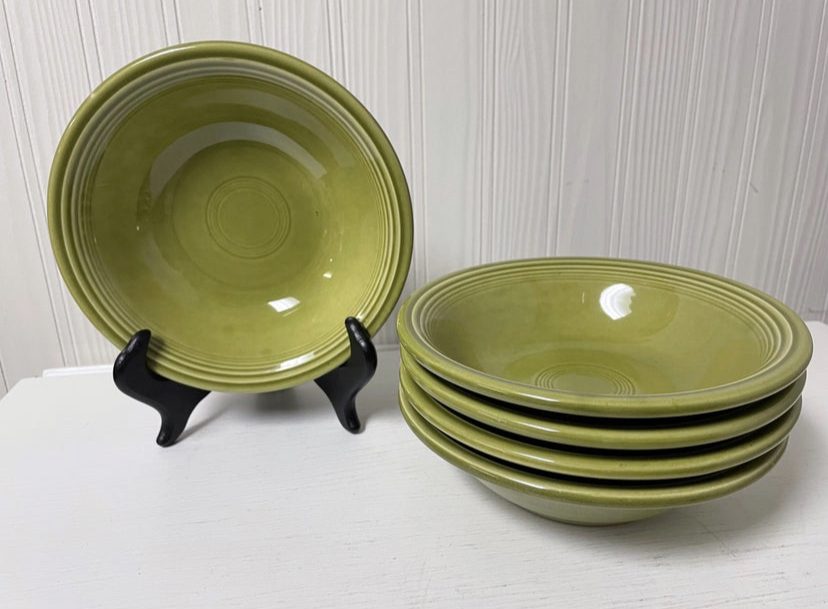
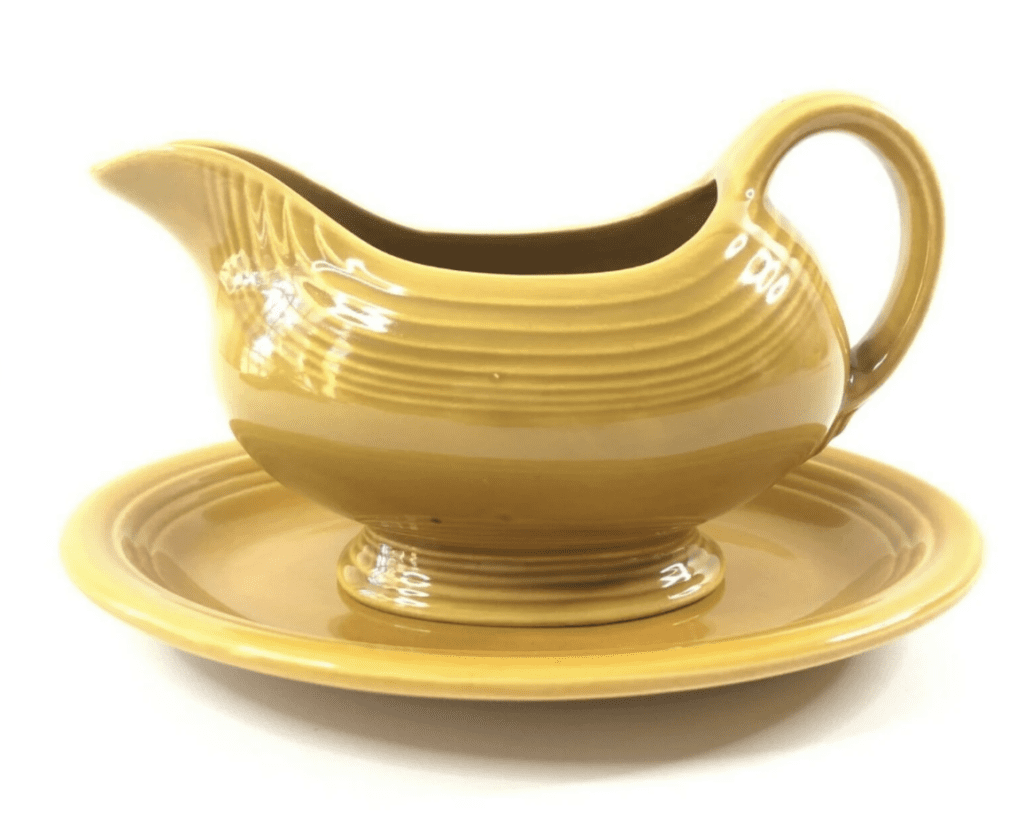
In 1986, with the new relaunch of the Fiestaware line, five new colors were released: apricot, black, cobalt, rose, and white. Since then, new colors have been released every year.
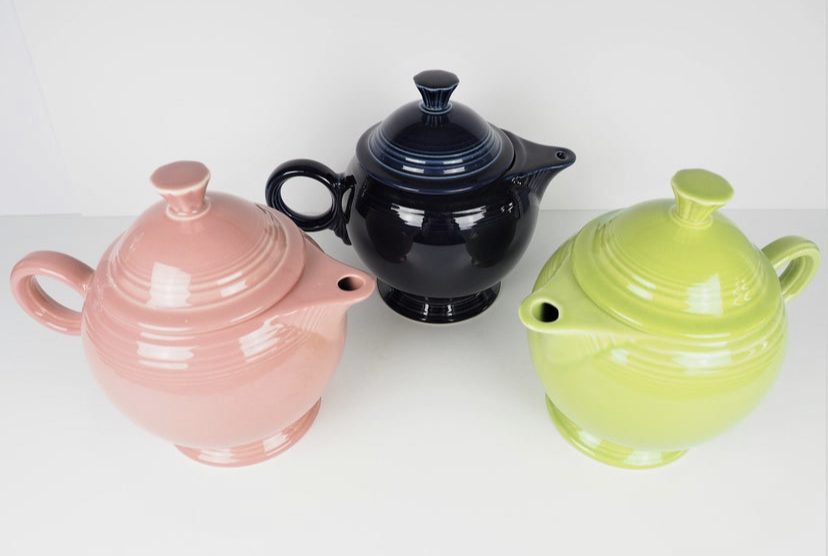
It is worth noting that between the years 1936-1972, the uranium coating on the dishes was one of the reasons that the colors were so vibrant. In fact, the original red color is often referred to as “radioactive red” and is a highly desirable collector piece since it was discontinued in 1943 after the US government confiscated the company’s uranium supply to use for the atomic bomb. [Source]
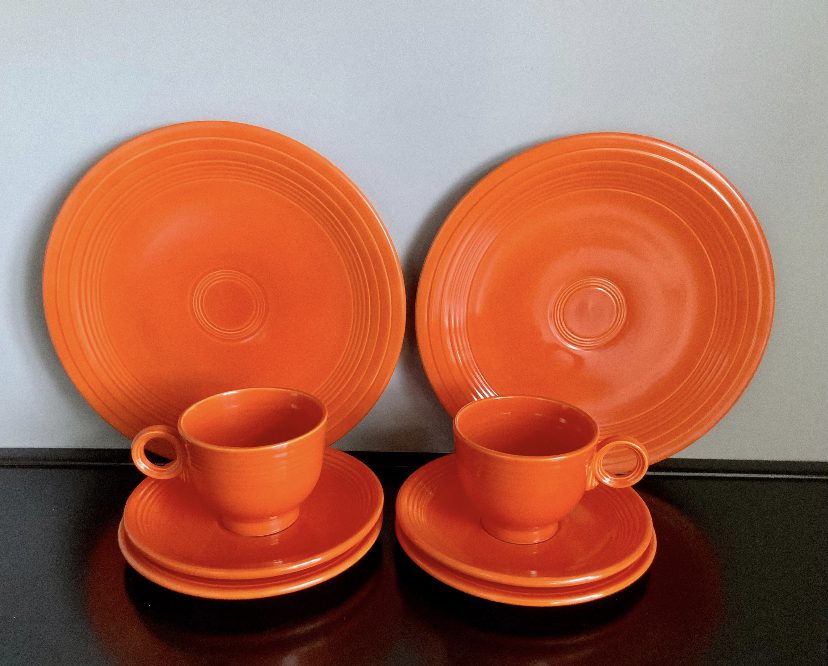
Design Goals
The designer for the famed Fiestaware collection was Frederic Rhead, a popular professor that was known throughout the art world for his good taste. When The Homer Laughlin China Company hired him as their new art director, they had some goals in mind with creating the design for the Fiestaware line. They wanted the consumer’s eye to be drawn to the shape and color of the dish. This meant that they didn’t want any designs or decorations on the dish, simply the color.
The classic rings that you see on each dish, but especially the vintage pieces, are part of the HLCC’s attempt to have each dish consist of many curves and brilliant colors. After the dishes were designed, it was time to pick the colors. Homer actually had hundreds of colors in mind for this first release, but after test marketing, the original five colors were chosen.
The popularity of these simple designs seems to have resonated with the public since the Fiestaware collection is just as popular today, if not more so than it was when it was first launched.
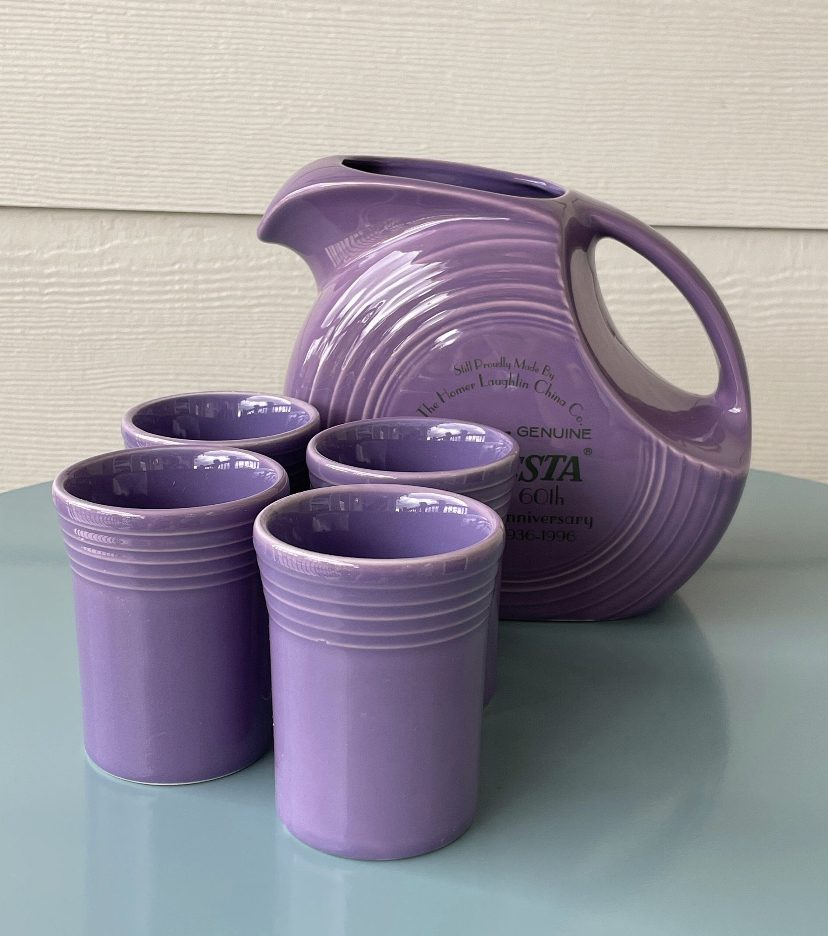
Retired Colors
As of January 2022, there are 36 retired colors. The current retired collectible colors include:
| Color | Years Manufactured |
|---|---|
| Claret | 2016 – 2017 |
| Sage | 2015 – 2018 |
| Flamingo | 2012 – 2013 |
| Marigold | 2008 – 2012 |
| Paprika | 2010 – 2016 |
| Chocolate | 2008 – 2011 |
| Evergreen | 2007 – 2010 |
| Heather | 2006 – 2008 |
| Peacock | 2005 – 2014 |
| Tangerine | 2003 – 2017 |
| Shamrock | 2002 – 2021 |
| Plum | 2001 – 2015 |
| Cinnabar | 2000 – 2010 |
| Juniper | 2000 – 2001 |
| Pearl Gray | 1999 – 2001 |
| Chartreuse (2 Year Run) | 1997 – 1999 |
| Sapphire (Limited Run) | 1996 – 1997 |
| Persimmon | 1995 – 2008 |
| Lilac (2 Year Run) | 1993 – 1995 |
| Sea Mist Green | 1991 – 2005 |
| Periwinkle Blue | 1989 – 2006 |
| Apricot | 1986 – 1998 |
| Black | 1986 – 2014 |
| Turf Green | 1969 – 1972 |
| Antique Gold | 1969 – 1972 |
| Medium Green | 1959 – 1969 |
| Gray | 1951 – 1959 |
| Chartreuse | 1951 – 1959 |
| Rose | 1951 – 1959 1987 – 2005 |
| Forest Green | 1951 – 1959 |
| Turquoise | 1937 – 1969 |
| Old Ivory | 1936 – 1951 |
| Yellow | 1936 – 1951 1987 – 2002 |
| Light Green | 1936 – 1951 |
| Cobalt Blue | 1936 – 1951 1987 – 2021 |
| Red | 1936 – 1943 1959 – 1972 |
Consumer Favorites
The most highly sought-after colors include medium green, red, and vintage turquoise. Medium green is easily the rarest color, so it doesn’t matter what dish you can find in this color as long as it’s the original medium green. Any original color (yellow, red, cobalt, green, and ivory) is also desirable since those colors are no longer produced and haven’t been since 1951.
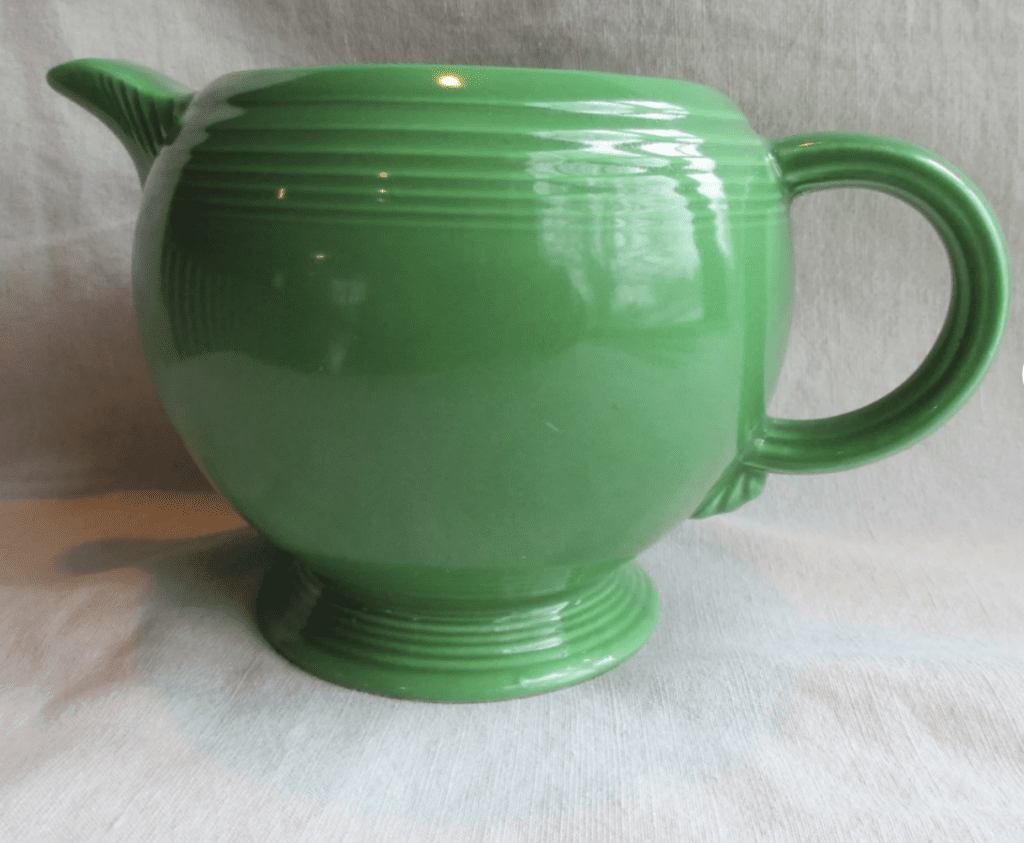
Check out our Fiestaware valuation guide for more examples of what various Fiesta colors are worth.
Fiestaware and Family Time
Since Fiestaware has been around for such a long time, it is only natural that the vibrant colors would create memories that last a lifetime. Several people have shared happy memories as a child choosing their favorite colored cup out of their mother’s or grandmother’s vast collection, or how they distinctly remember the way their mashed potatoes looked against the brightly colored plates. One even described walking into her grandmother’s dining room as a “festival of colors” because of all the Fiestaware on the table.
One experience shared was from an older woman who calls her Fiestaware set her “happy plates” because of how happy the warm colors make her feel, while another mentions how excited her children are for mealtimes because of the fun dish colors. It seems that not only are the pieces colorfully classic, but they are also extremely memorable. [Source]
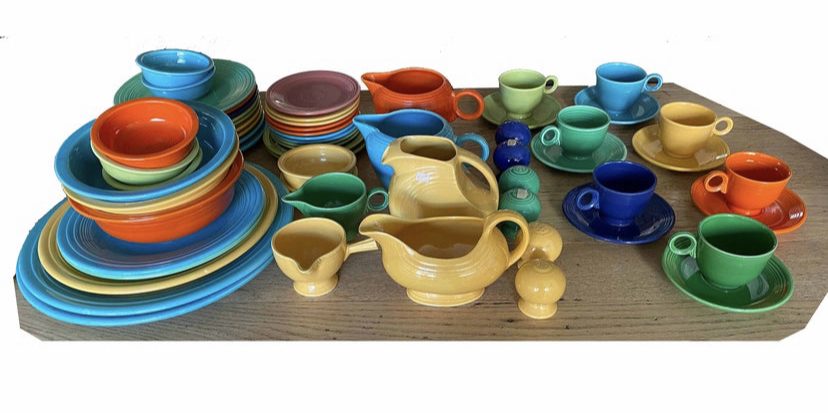
Competitors
Fiestaware is located in West Virginia, USA. Since the company is not international, they have struggled to compete with labor costs, especially since most dishware is made in China, Mexico, and India.
In the early 1960s, Homer Laughlin China Company struggled with international competition and cheaper prices, and although their dishes were of higher quality, the company couldn’t keep up and had to close its doors in 1972. However, in the late 80s, the department store Bloomingdales recognized the excitement that surrounded vintage Fiestaware and wanted to help the company reopen its doors.
Bloomingdales was able to talk the Homer Laughlin China Company into restarting their production and in 1986, they launched a new line of Fiestaware, new colors and all. Today, Fiestaware is the best-selling dishware in American history. It seems that there’s just something about the high-quality dishes and the beautiful colors that are appealing to people from the 1940s all the way to the 2000s.
